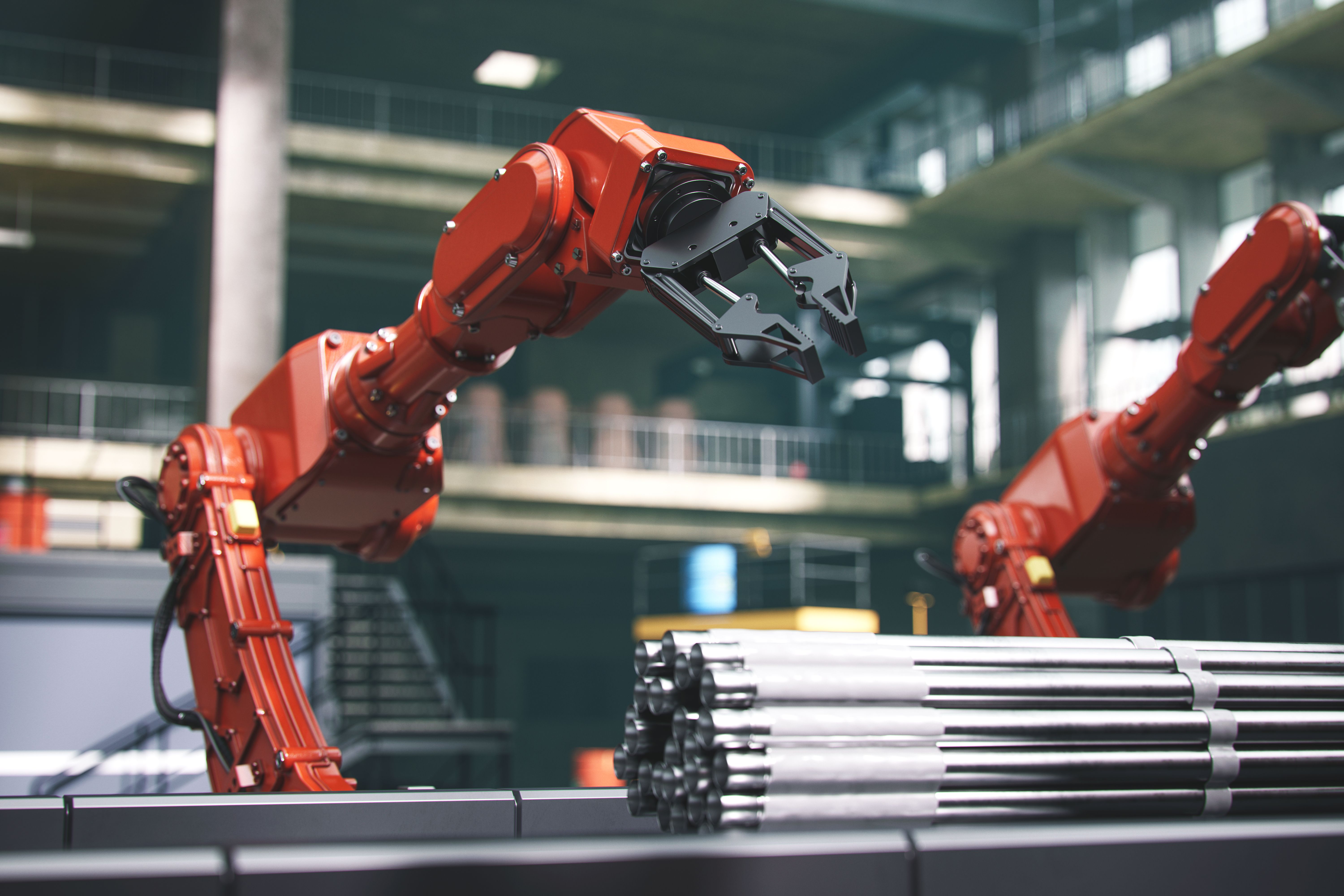The Transformative Impact of Industrial Robotics on Society
JD
The Rise of Industrial Robotics
In recent decades, industrial robotics has revolutionized the manufacturing landscape. These sophisticated machines have become integral to numerous industries, including automotive, electronics, and pharmaceuticals. As technology advances, robots are becoming more autonomous and capable of handling complex tasks, significantly enhancing productivity and efficiency.
The integration of robotics into industrial processes has brought about a seismic shift in the way goods are produced. Companies are now able to achieve levels of precision and speed that were previously unattainable. This transformation is not only reshaping production lines but also impacting the global economy.

Enhancing Productivity and Efficiency
One of the most profound impacts of industrial robotics is the increase in productivity. Robots can operate 24/7 without fatigue, allowing for continuous production cycles. This capability reduces downtime and significantly boosts output. Industries that have embraced robotics often report a considerable decrease in production costs, enabling them to remain competitive in an ever-evolving market.
Moreover, robots excel in performing repetitive tasks with high precision, reducing the likelihood of human error. This precision is crucial in sectors where even minor mistakes can lead to significant financial losses or safety hazards. The consistency and reliability provided by robotics are invaluable assets to any manufacturing process.

Impact on Employment
The adoption of industrial robotics has sparked debates about its impact on employment. While some argue that robots displace human workers, others believe they create new opportunities for skilled labor. The reality is nuanced. While certain manual jobs may diminish, there is a growing demand for skilled workers who can design, program, and maintain these advanced machines.
This shift necessitates a transformation in education and training programs to equip the workforce with the skills required for the jobs of the future. Emphasizing STEM (Science, Technology, Engineering, and Mathematics) education is crucial to prepare individuals for this new era of employment.

Safety and Quality Improvements
Industrial robots have greatly enhanced workplace safety by taking over dangerous tasks that pose risks to human workers. In environments where exposure to harmful substances or extreme conditions is unavoidable, robots serve as ideal substitutes, ensuring that human employees remain out of harm's way.
Additionally, the implementation of robotics has led to significant improvements in product quality. Robots maintain consistent quality standards due to their precision and repeatability, which is particularly important in industries like pharmaceuticals and electronics where quality control is paramount.
The Future of Industrial Robotics
As technology continues to advance at a rapid pace, the future of industrial robotics looks promising. Innovations such as artificial intelligence and machine learning are enhancing the capabilities of robots, making them more adaptable and intelligent. This evolution will likely lead to even greater efficiencies and novel applications across various sectors.
Furthermore, collaborative robots or "cobots" are emerging as a trend. These robots work alongside humans, combining the strengths of both parties to achieve optimal results. The synergy between humans and robots holds immense potential for transforming industries and driving further advancements.

Conclusion
The transformative impact of industrial robotics on society is undeniable. From boosting productivity and efficiency to enhancing safety and quality, robots are reshaping industries worldwide. While challenges such as workforce displacement exist, the opportunities for growth and innovation are vast.
As we move forward into a future increasingly defined by technology, embracing industrial robotics will be essential for businesses seeking to stay competitive and thrive in the global marketplace. The journey towards a more automated world is just beginning, promising exciting developments in the years to come.
